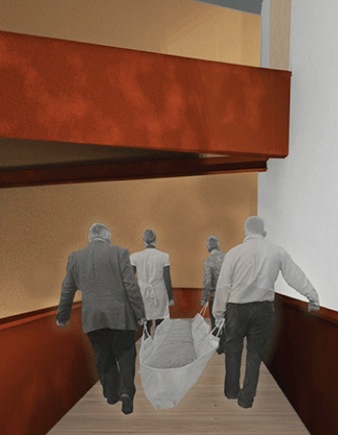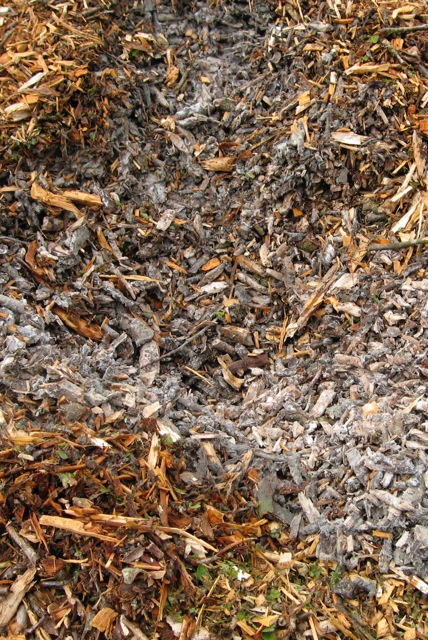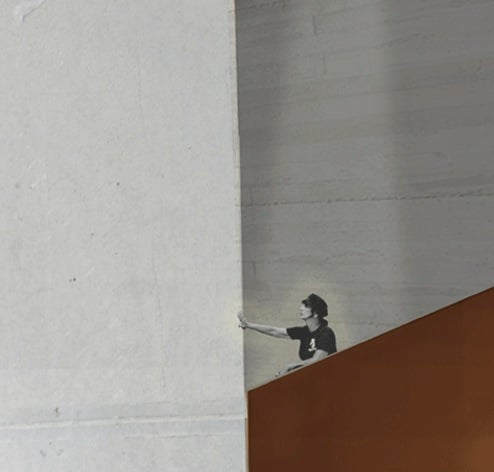Earth-friendly gardeners are committed to composting all organic matter – so why not extend the principle to our own remains? An innovative ‘deathcare’ project in Seattle is developing a better way for gardeners to go.
Of all the things that please me about my modest home, the one I take most delight in is the fact that eventually – bar some roofing slates, nuts and bolts, and the concrete base on which it rests – it will rot away. While folk fret about the appreciating value of their ‘bricks and mortar’, I sit in the sun daydreaming about what’ll become of this patch of earth when I’m pushing up dandelions. I guess not having bricks and mortar is partly to blame; my cottage is made mostly of wood. It’s unassuming yet distinctive enough to be known locally as ‘that green shed’.
It arrived here, flat-packed, from Canada, in the 1930s, and has been going strong ever since. The major improvements before my tenure were the replacement of its corrugated tin roof by slates, and a mains water connection (before that raw water siphoned into a tank from a reservoir up the hillside). My contribution to its longevity has been replacing cladding and adding eco-insulation. To one side of the cottage, a terraced garden is slowly coming into being, built mostly from found and gifted slate. Here I’m building soil, growing some food and flowers, lizard-watching, making oodles of leaf mould, and composting anything that’ll rot. The last of these is now such a fine art that I’ve never had need for a wheelie bin, and non-recyclable ‘waste’ is minimal.

With a home that’ll mostly rot, and a garden founded on rotted-down stuff, my sun-drenched musing often wanders onto what will one day become of the big lump of organic matter that’s me. Not struck by the idea of being buried beyond the reach of earthworms, or of becoming a pot of ash, in zany moments I think how fitting it would be if, on the final day, I could just slip quietly into a trench (not too deep – I want to be where the action is) and become a nourisher of the soil, after being nourished by it all my life. I’m heading, in all senses, toward a ‘green burial’, where there will be no dour, saddening headstone, only young, uplifting trees and, if I’m lucky, carpets of cheering dandelions. Then, just as my sun-soaked imaginings have an oak’s roots caressing my disintegrating cadaver, I discover a new idea that’s destined to improve how we view our inevitable return to nature’s endless cycle as much as it’ll improve soil itself.
The Urban Death Project (UDP) is the brainchild of Katrina Spade, an architect with a background in sustainable design, permaculture and regenerative communities. The mission of this not-for-profit project, based in Seattle in the US, is to ‘create a meaningful, equitable, and ecological urban alternative for the care and processing of the deceased.’ She wants to do this by composting our bodies after we die, turning them – literally – into rich, soil-feeding compost (which US gardeners also call ‘soil’). Conventional burial and cremation both consume energy and materials; burial in particular creates a long-lasting ‘footprint’ (think headstone).

In the US, burial in the ground effectively means that your organic remains (which will have first been embalmed with chemicals to stall decay) are cut off from any contact with the earth; coffins are lined with metal, and graves/vaults are lined with concrete (to stop the ground sinking and make grass-mowing easier…). Space for burials is running out, especially in cities (which is also a problem in the UK, although we hold off on the concrete). Cremation fares better environmentally, but still pollutes, uses resources, and burns large quantities of fossil fuels, whose unleashed carbon is altering our climate. Green burials fare best of all, but are beyond the reach of most city-dwellers, and still require land. As Katrina says, ‘the very last thing that most of us will do on this earth is poison it.’ It’s hard to imagine a less fitting end to a gardening life dedicated to nurture.
The UDP’s concept is – like so much successful gardening that works with nature – a simple one. When someone dies, their body is taken to a UDP facility, where family and friends, in a supportive environment, wrap the deceased in a simple shroud (there is no toxic embalming), then carry them to the top of a three-storey ‘core’, where they gently ‘lay in’ the body at the top of the decomposition vessel and cover it with woodchips (which, along with sawdust, is what the core is filled with). A suitable ritual or religious ceremony helps bid farewell to the loved one, while acknowledging our connection to the cycle of nature.
Over the following weeks, microbial life in the carefully aerated core breaks down the proteins and carbon of which we’re made, into compost. Even the toughest of our bones turn into soil food, albeit at a slower pace than our flesh (artificial hips and suchlike are removed when the mature compost is extracted, and recycled). As each body sinks down into the core on its way to becoming life-giving compost, new bodies are laid in on top. Temperatures can reach 71°C (160°F) during the composting, which sees off pathogens, while the microbes in the woodchips, together with the careful design of biofilters, avoids odours.

When the process is complete, family and friends are invited to gather to contemplate the finished compost (something we gardeners do all the time) and acknowledge the transformation, and are encouraged to take some of the compost home for their own garden (although it’s not for use on food crops). The rest is used to improve the soil in local parks and public spaces, nurturing the place where the deceased once lived. If you do decide to take some compost home, there’s a good chance it might be a ‘mix’ of your own loved one plus a few others who’ve commingled, which gives the idea of ‘community composting’ a whole new twist.
Innovative as the UDP sounds, its work is actually based on many years of research experience among farmers who successfully use woodchip-based composting systems to safely dispose of dead livestock (‘static mortality composting’). Katrina and her team are now refining these techniques so they become a meaningful, acceptable and affordable way of experiencing ‘deathcare’, while helping to ease our environmental burdens. The project is already studying rates of human decay thanks to volunteers who have donated their compost potential to science. The UDP is currently crowdfunding to take its work forward: a $2500 (£1662) pledge will reserve you a spot in a future US-based UDP facility (other less earthy pledges are available).
For many of us, the instinct is to block out or even run from death, not embrace its wondrous potential to nourish new life. This project might just help change that. As gardeners we can’t abide waste, and we know all about life and death, how one springs from the other – that’s what the miracle of composting’s all about. I can’t think of a better way to go; it sure beats slipping into a trench. I guess I probably shouldn’t try this at home, but I know where I can get my hands on a big pile of woodchips…
Text and woodchip image © John Walker. Other images courtesy of the Urban Death Project.
Find John on Twitter @earthFgardener


